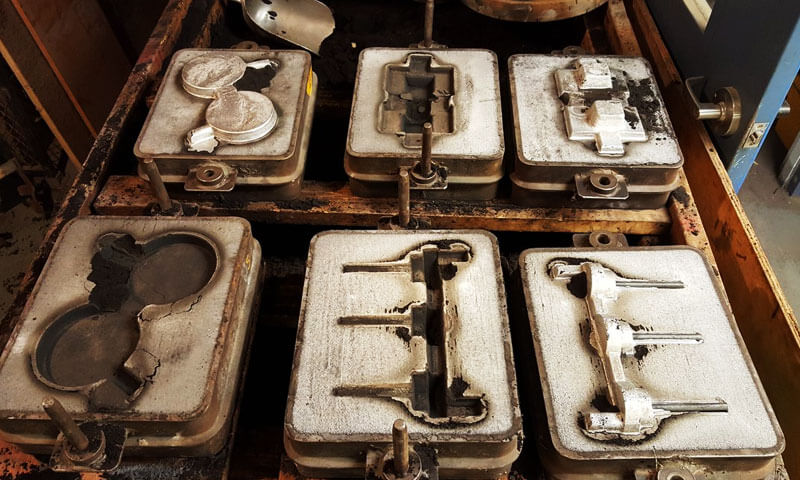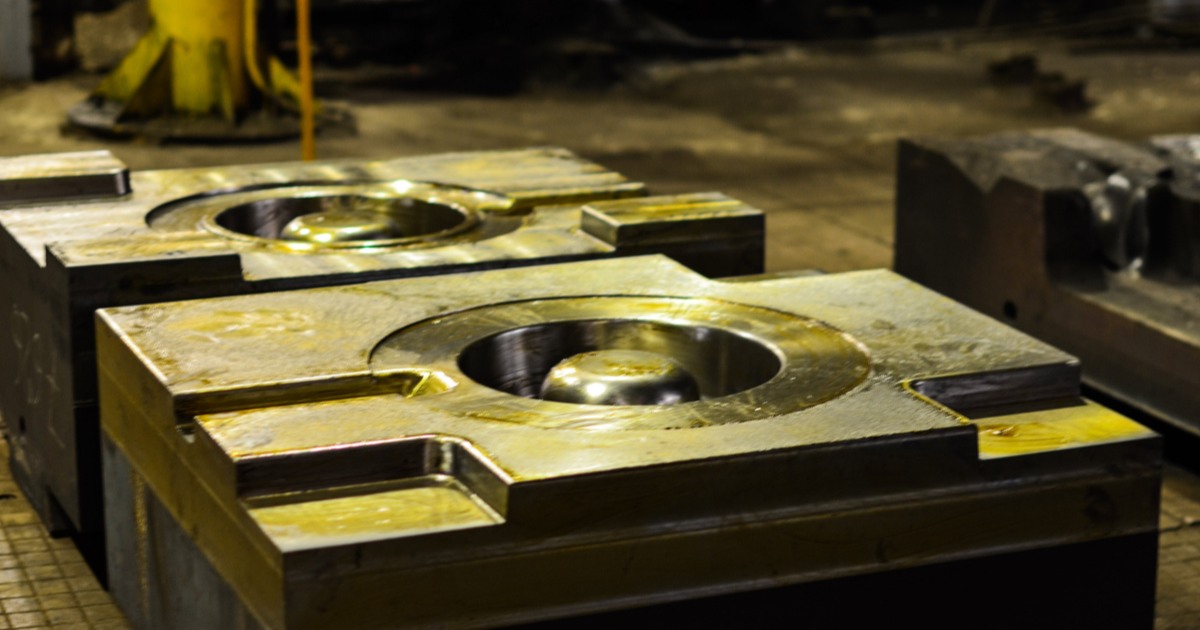The future of Aluminum Metal Casting and its innovation in global manufacturing
Wiki Article
Understanding the Production Process and Maintenance Practices for Light Weight Aluminum Foundry Products
The manufacturing process for aluminum foundry products is intricate and requires a comprehensive understanding of several phases. From the melting of aluminum at heats to different casting approaches, each step plays an important duty. In addition, maintenance practices ensure devices remains effective and items are devoid of issues. The intricacies of these procedures and their effect on product top quality raising essential questions about ideal techniques and cutting-edge methods in the sector.Review of Aluminum Foundry Products
Aluminum foundry items are essential elements in numerous sectors, offering a blend of lightweight stamina and rust resistance. These items are generally used in markets such as automobile, aerospace, and building and construction, where sturdiness and effectiveness are extremely important. Aluminum's reduced thickness makes it an ideal product for applications calling for lowered weight without giving up structural stability. The versatility of light weight aluminum permits for the creation of complex geometries, dealing with varied layout demands.In addition, aluminum foundry items can be customized with numerous alloys to boost particular residential or commercial properties, such as improved thermal conductivity or boosted firmness. Their resistance to oxidation and rust warranties long life, making them suitable for both indoor and outside applications. The mix of these qualities adds to the expanding choice for aluminum in modern-day manufacturing. As sectors seek to optimize efficiency and sustainability, light weight aluminum shop products remain to play a critical function in fulfilling these demands.
Melting Process: Transforming Aluminum
The melting procedure is a basic action in the production of aluminum shop products, as it changes solid aluminum right into a liquified state ideal for spreading. This procedure normally occurs in a furnace, where scrap light weight aluminum or ingots are heated to temperature levels around 660 levels Celsius. The selection of heater-- be it electrical, gas, or induction-- impacts the performance and price of melting.During melting, careful consideration is provided to the removal of impurities, such as oxides and various other impurities, which can adversely impact the top quality of the end product. Fluxes might be contributed to assist in this purification procedure, boosting the fluidness of the molten steel.
Furthermore, temperature control is important to assure harmony and stop getting too hot, which can bring about oxidation. As a result, the melting procedure not only prepares aluminum for spreading yet likewise plays a considerable role in determining the honesty and buildings of the final shop items.
Casting Techniques in Aluminum Factory
Numerous casting methods are utilized in aluminum shops to produce high-quality parts, each suited to various applications and specs. Among one of the most commonly utilized methods are sand spreading, die casting, and investment casting. Sand spreading utilizes a combination of sand and binder to create mold and mildews, permitting for intricate forms and large parts (Casting Foundry). Pass away casting, characterized by the high-pressure injection of liquified light weight aluminum right into steel mold and mildews, produces exact and repeatable parts, perfect for mass manufacturing. Investment spreading, or lost-wax casting, entails creating a wax design that is coated in a ceramic shell, making it possible for intricate layouts and fine details. Each strategy has its advantages; sand spreading is economical for low-volume manufacturing, while die spreading offers efficiency for high-volume runs. Financial investment spreading is preferred for elements requiring extraordinary precision and surface area coating. Selecting the ideal technique depends on aspects such as production volume, part intricacy, and material properties
Ending Up Processes for Light Weight Aluminum Components
After casting techniques have actually formed the aluminum elements, finishing processes play a substantial function in enhancing their functionality and aesthetic charm. These procedures typically include machining, surface therapy, and finish applications. Machining involves specific elimination of material to accomplish wanted dimensions and surface area high quality. This is essential for ensuring that parts fit seamlessly into their designated applications.Surface area therapies, such as anodizing and polishing, are utilized to enhance rust resistance and boost visual characteristics. Aluminum Casting. Anodizing, in particular, gives a safety oxide layer, making the light weight aluminum a lot more durable and visually enticing

Maintenance Practices for Longevity
Applying normal upkeep practices is vital for making certain the durability of aluminum foundry products. Routine examinations should be conducted to determine deterioration, as early discovery can avoid costly repairs and expand the life expectancy of parts. Cleansing equipment and equipment on a regular basis decreases the risk of contamination, which can adversely impact item high quality. Lubrication of relocating components is additionally crucial, as it lowers rubbing and wear, improving functional efficiency.Furthermore, the application of a preventative maintenance routine helps in systematically attending to prospective issues before they intensify (aluminum metal casting). This consists of monitoring for leakages, making certain appropriate positioning, and adjusting machinery. Staff training on proper handling and maintenance methods promotes a society of care, which is vital for maintaining product stability. Ultimately, recording upkeep activities offers valuable insights into efficiency patterns, allowing for educated decision-making regarding future upkeep strategies
Quality Assurance and Screening in Light Weight Aluminum Factory Manufacturing
Quality control and testing are vital in light weight aluminum shop production, as they ensure that end products satisfy defined criteria and client assumptions. official site This process begins with raw product evaluation, ensuring that aluminum alloys follow called for structures. Throughout the manufacturing cycle, in-process examinations are performed to monitor specifications like material, temperature, and stress circulation.
Once spreading is full, different tests-- such as dimensional checks, visual assessments, and non-destructive screening-- are done to recognize any kind of defects. Mechanical homes, including tensile toughness and firmness, are assessed through standardized screening methods.
Adherence to industry standards, such as ISO and ASTM, is crucial for ensuring item high quality. Statistical procedure control strategies are often utilized to assess production data and facilitate constant improvement. By implementing strenuous quality control actions, aluminum foundries can improve item integrity and reduce waste, eventually leading to higher consumer contentment and functional efficiency.
Regularly Asked Concerns
What Are the Environmental Influences of Aluminum Factory Procedures?
Aluminum factory procedures can lead to substantial environmental influences, consisting of air contamination from emissions, water contamination from waste discharge, check that and energy usage adding to greenhouse gas emissions, ultimately influencing local environments and area wellness.Just How Do Light Weight Aluminum Rates Influence Shop Manufacturing Choices?
Light weight aluminum costs greatly influence shop manufacturing choices; greater prices may result in decreased output or enhanced efficiency measures, while reduced costs can motivate expanded manufacturing and investment in new technologies to boost competition and productivity.What Precaution Are Necessary in Light Weight Aluminum Foundries?
Necessary precaution in aluminum shops include safety equipment, appropriate ventilation to minimize inhalation of fumes, routine equipment maintenance, training on emergency treatments, and adherence to security protocols to stop accidents and injuries among employees.Can Light Weight Aluminum Be Recycled, and Just How Is It Processed?
Light weight aluminum can undoubtedly be recycled. The process entails collection, melting, and changing the material right into new products, significantly minimizing power consumption and environmental influence contrasted to primary light weight aluminum manufacturing while maintaining worldly top quality.What Prevail Flaws in Aluminum Spreading and Their Reasons?

The manufacturing procedure for light weight aluminum factory products is detailed and needs a detailed understanding of several phases. Light weight aluminum foundry items are crucial elements in different sectors, using a mix of lightweight toughness and deterioration resistance. The melting process is a fundamental action in the manufacturing of aluminum shop items, as it changes strong aluminum into a molten state appropriate for spreading. Carrying out regular maintenance techniques is essential for making sure the longevity of aluminum shop items. Quality control and read the article testing are paramount in light weight aluminum factory manufacturing, as they ensure that last products fulfill defined requirements and client expectations.
Report this wiki page